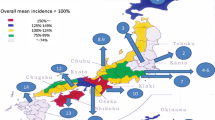Abstract
Background: Common bile duct stones (CBDS) are a frequent problem (10–15%) in patients with symptomatic cholecystolithiasis. Over the last decade, new diagnostic and surgical techniques have expanded the options for their management. This report of the Consensus Development Conference is intended to summarize the current state of the art, including principal guidelines and an extensive review of the literature.
Methods: An international panel of 12 experts met under the auspices of the European Association of Endoscopic Surgery (EAES) to investigate the diagnostic and therapeutic alternatives for gallstone disease. Prior to the conference, all the experts were asked to submit their arguments in the form of published results. All papers received were weighted according to their scientific quality and relevance. The preconsensus document compiled out of this correspondence was altered following a discussion of the external evidence made available by the panel members and presented at the public conference session. The personal experiences of the participants and other aspects of individualized therapy were also considered.
Results: Our panel of experts agreed that the presence of common bile duct stones should be investigated in all patients with symptomatic cholecystolithiasis. Based on preoperative noninvasive diagnostics, either endoscopic retrograde cholangiopancreaticography (ERCP) or intraoperative cholangiography should be employed for detecting CBDS. Eight of the 12 panelists recommended treating any diagnosed CBDS. For patients with no other extenuating circumstances, several treatment options exist. Stones can be extracted during ERCP, or either before or (in exceptional cases) after laparoscopic or open surgery. Bile duct clearance should always be combined with cholecystectomy. Evidence for further special aspects of CBDS treatment is equivocal and drawn from nonrandomized trials only.
Conclusions: The management of common bile duct stones is currently undergoing some major changes. Many diagnostic and therapeutic strategies need further study.
Similar content being viewed by others
Author information
Authors and Affiliations
Additional information
Received: 20 November 1997/Accepted: 3 December 1997
Rights and permissions
About this article
Cite this article
Paul, A., Millat, B., Holthausen, U. et al. Diagnosis and treatment of common bile duct stones (CBDS) . Surg Endosc 12, 856–864 (1998). https://doi.org/10.1007/s004649900729
Issue Date:
DOI: https://doi.org/10.1007/s004649900729




